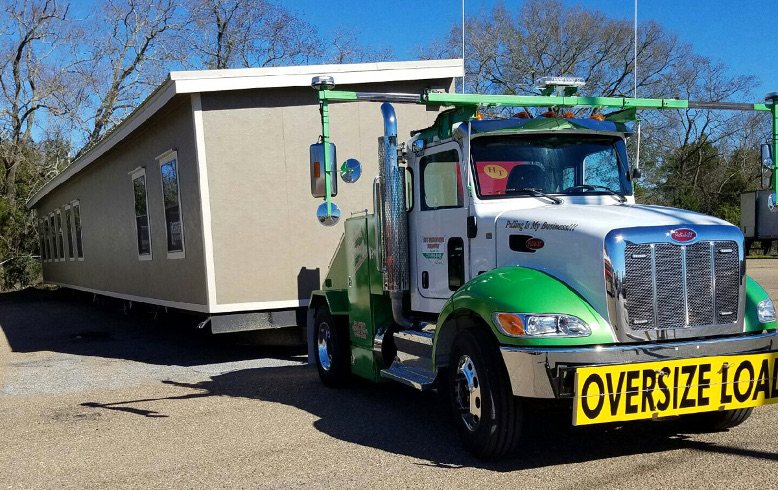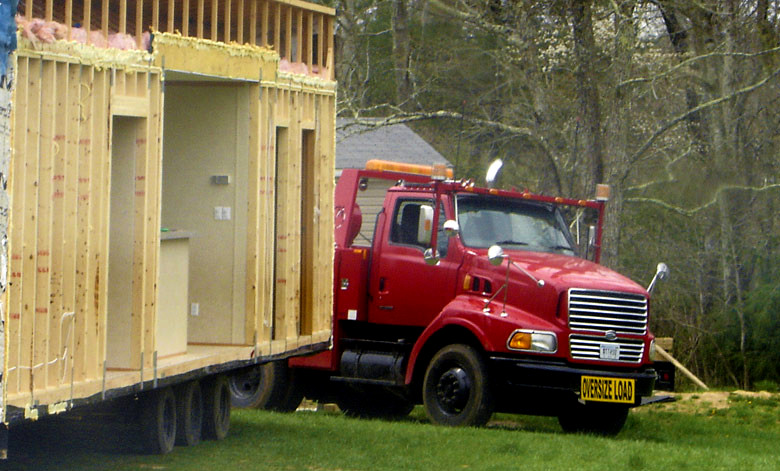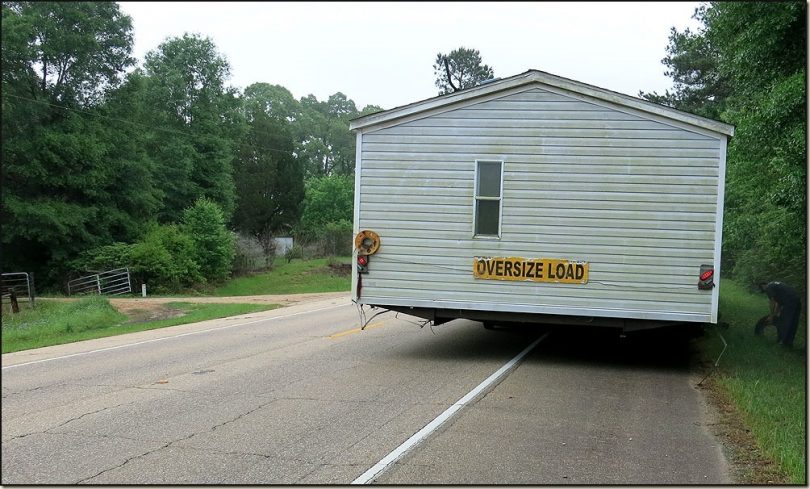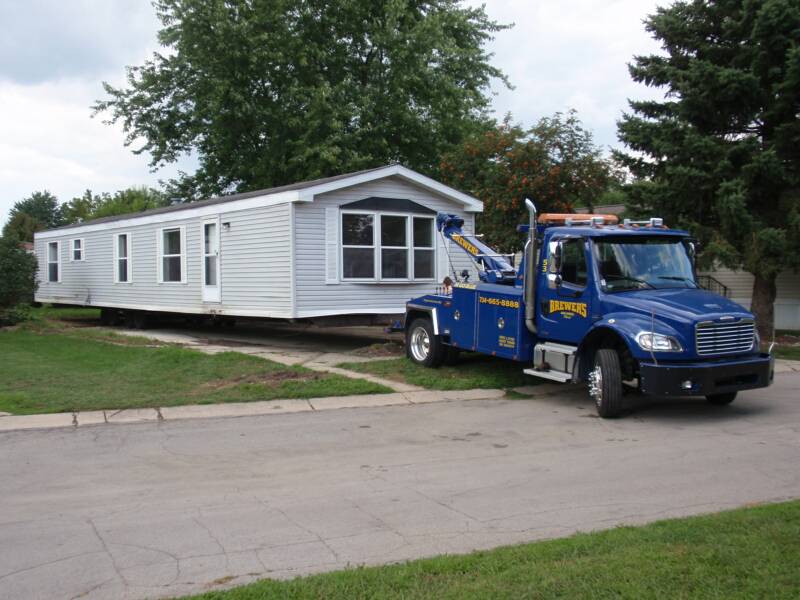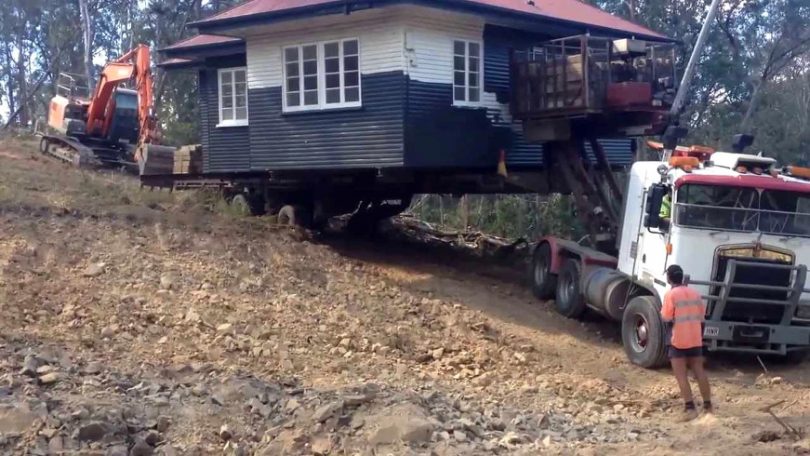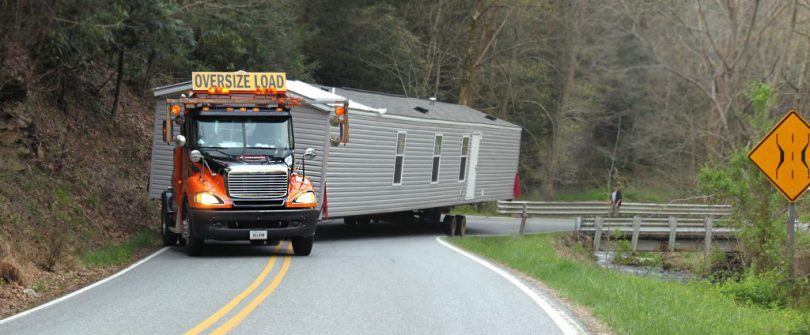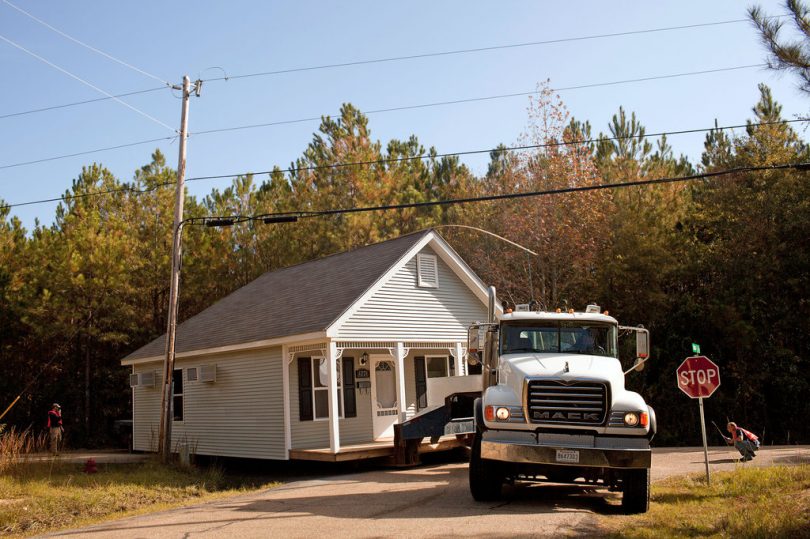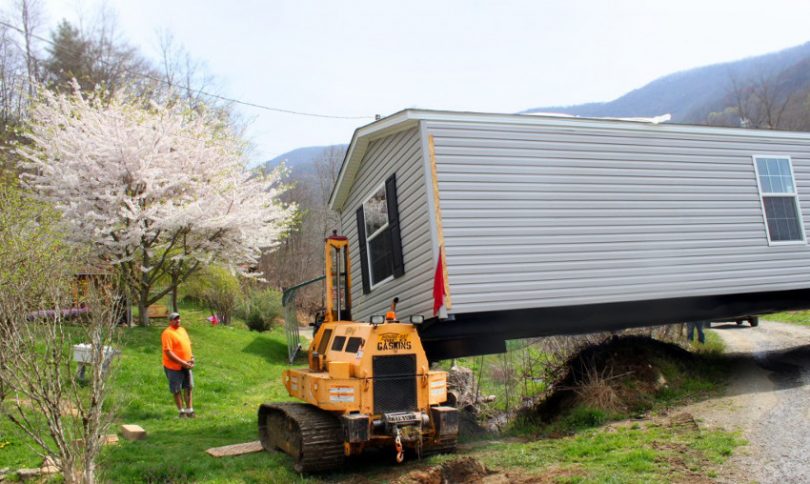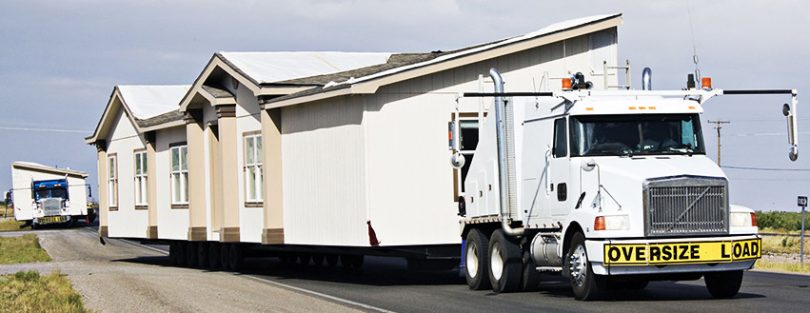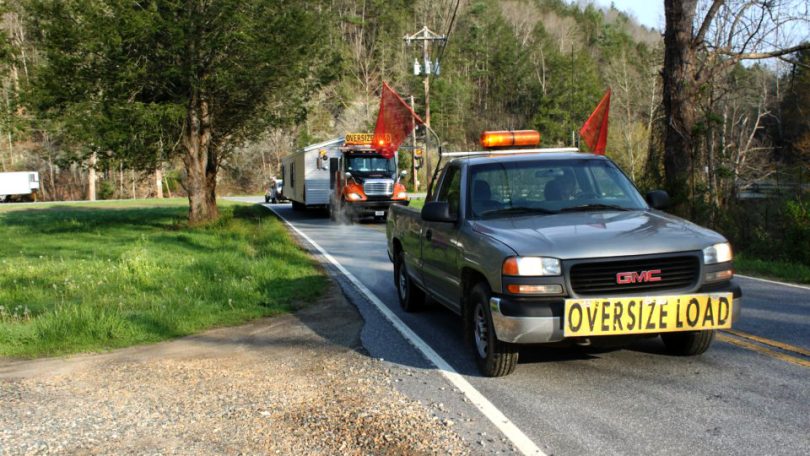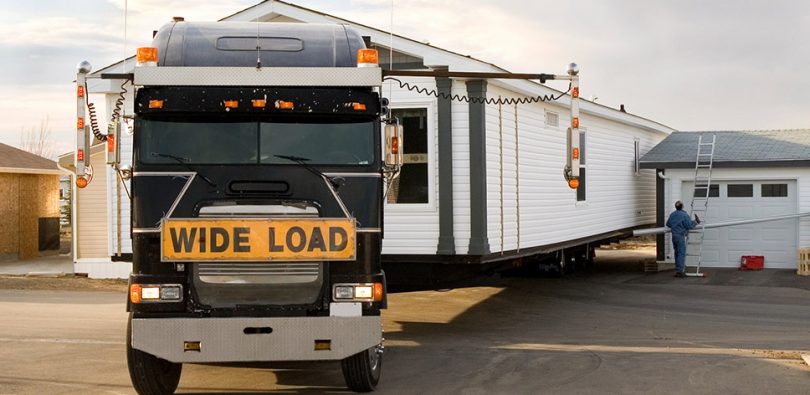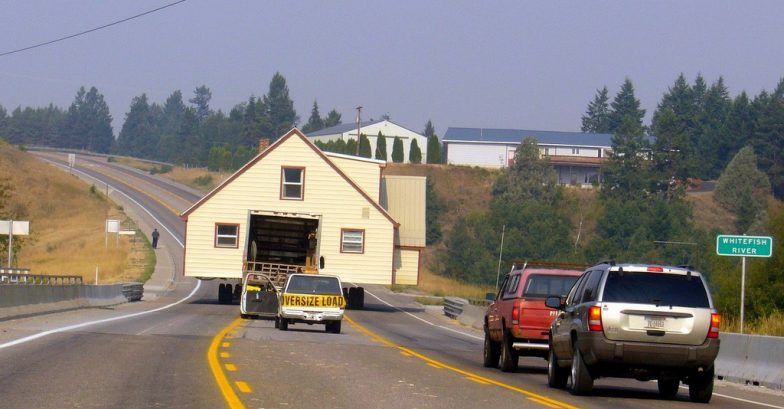Moving a mobile home can be expensive. Not only is there the expense of moving it, there are other costs that must be considered.
This article breaks down the total cost to move a mobile home into transportation cost, mobile home removal, setup, and other additional costs you might not know about. When shopping for a manufactured home, dealers may offer incentives such as discounted or free transportation cost, free removal of your old mobile home to encourage you to buy from them.
We’ll go over the all these details plus share some tips on what to look for in the various contracts that are used to move and set up your mobile home so you can know answer that pressing question: how much does it cost to move a mobile home?.
Transportation of Your Mobile Home
The largest cost of moving your mobile home will be the cost of transportation. There are several factors including size of home, weight, difficulty of access, and how far it is between where it will be picked up and delivered, and the kinds of additional preparation that have to be taken care of before the home is transported.
Size of Home
Whether you are removing an old home or preparing to have a new one moved, you need to calculate the size and weight of your home. Single-wide homes are usually cheaper than double-wides to move because they require less equipment and labor.
However, long mobile homes can cost substantially more to move, due to difficulty maneuvering it during transport. Double-wides can cost up to twice the amount of a single-wide, due to the transporter having to move each half of the home separately using two trucks. To calculate the size of your home, use the following steps:
- Is it a single-wide or double-wide home?
- Write down the length and width of your home, in feet
- Multiply length by width to get the square feet of your home
- Estimate the weight of your home using this guide:
- If it was built in 1980 or before: 40 lbs/square foot
- If it was built between 1981 – New: 50 lbs/square foot
- It if has high ceilings (typical in double-wides): 70 lbs/square foot
- Find the correct weight for your home and multiply it by the size of your home in square feet and write it down on the same sheet of paper as the length and width of your home.
Physical Obstructions on Property
After calculating the size and weight of your home, go outside and take a look at your property. Make notes about your home and the property it sits on with this guide:
- Determine the location of home on your property — Is it on top of a hill, in a valley, on the side of a cliff? Is it a long ways back off the road? It is much more difficult to move a home up or down a hill than on flat ground.
- Driveway type and length — Is your driveway paved? Is it gravel? How long is it? Are there any sharp turns? A straight, paved driveway is the easiest to negotiate when removing or delivering a home. Rough, muddy driveways with hills and sharp turns make for difficult maneuvering conditions that may cause damage to your home.
- Driveway angle — Most driveways connect to the road at a 90º angle. If your driveway connects to the road at any other angle make note of it. Sharp driveway angles can make it difficult to maneuver a home.
- Physical Obstructions — This is anything on your property that will make maneuvering your home difficult. This is a list of the most common obstructions:
- Trees — When trees are near the edge of your driveway and/or the road, they make maneuvering your home onto or off from the property very difficult or even impossible. Trees that are within 5-6 feet of the driveway may need to be removed in order to ensure adequate room for maneuvering.
- Utility Poles — Make note of utility poles that are within 5 or 6 feet of your driveway and the adjacent road.
- Low Overhead Lines — Find out what the transport height of your home will be, then check to see of you have any lines that are lower than your home’s transport height plus 6 inches. If you have low overhead lines, they will need to be raised or temporarily removed when your home is moved.
- Bridges with sides — If your driveway has a bridge with sides, they may need to be removed until after your home is moved.
- Gates and Fencing — If you have gates and fencing that run near the driveway, it may need to be removed to make room maneuvering while your home is being moved.
- Sheds and Small Buildings — Sheds and small buildings that are too close to the home may need to be moved to make room for maneuvering the home.
- Location of underground structures — Septic tanks, leach beds, old wells, storage tanks, drainage tiles, and other buried structures need to be clearly marked to prevent damage caused by the weight of the home of equipment moving over it.
Transport Distance
The distance from the dealer to your property affects how much you will have to pay to move your home. Several factors influence how much you will pay, such as whether the home you’re planning to buy is new or used, and if you are looking to have an old home removed from your property.
Cost is broken down into two distance-based categories: under 100 miles and 100 miles or more. Mileage rates can run from $6/mile up to $16/mile or higher, depending on the type and size of the home and how far it has to be transported.
Under 100 miles
The Transportation cost for length of haul under a hundred miles may be billed as a flat-rate fee based on whether your home is a single-wide or double-wide. This may be cheaper than the calculated rate for the distance would be.
100 miles or more
If the length of haul is at least one hundred miles, the mobile home transporter will calculate the cost per mile, based on the actual length of haul, the home’s type, and equipment needed to move it.
If you’re buying a new home, the dealer may discount the transportation cost by deducting the first hundred miles from the total transportation cost and add the remaining amount to the base price of your new home. If you’re buying a used home, you may be able to negotiate similar terms.
New Home Transportation Cost
Some dealers offer new home buyers free transportation of their home as an incentive to buy. This can save you several thousand dollars in transportation costs. With billable cost-per-mile running anywhere from 6 up to 16 dollars per mile or more, it’s a good idea to look closely at this incentive.
While considering the incentive, find out who the dealer contracts with and learn about the reputation that mobile transport service has. Free transportation of your new home may not sound so great if the transporter has had several damage claims and/or has been difficult to deal with when resolving transportation related damage claims.
Used Home Transportation Cost
If a dealer is really motivated to sell a used home, free transportation may be offered as an incentive to buy a used home. Otherwise, you will probably have to pay for transportation yourself.
The good new is that dealers will usually allow you to add the transportation cost onto the base price of the used home, saving you thousands of dollars out-of-pocket to get the home delivered.
Old Home Removal
If are buying a manufactured home and you have an old one you want to get rid of, your dealer may remove it at no charge, so long as you sign it over to the dealer. Before you agree to this, do some research to find out how much your old home is worth.
If it’s worth as much or less than what the transportation cost will be, let the dealer have it. However, if it’s worth more than the transportation cost, you may want to try and sell it, with the buyer paying to have your old home moved. Selling a home this way is tough, and there is always the chance that you won’t sell it at all.
If your dealer doesn’t want it, and you know it’s not worth the time and effort to sell it, you may need to contract with a mobile home transport service to move it for you. You may be able to have it moved to your dealer’s lot and put on consignment.
If your dealer offers this option, request to see the consignment contract details and carefully read them. Make sure that the commission the dealer gets is acceptable and that there are no hidden costs or fees for placing your old home on consignment.
Setup Costs
After a home is moved onto a property, it has to be positioned then hooked up to utilities. While most manufactured home dealers include home setup in the price of the home, be sure to get written details on what the dealer includes in the setup process.
Most of the time, setup includes setting the piers and leveling the home, connecting water, gas, electricity, and sewage, and finishing the home. If you plan to have your home set on a foundation, you may have to arrange and pay for the additional equipment and labor. Here’s a handy list of things to check for when looking at a dealer’s setup policy:
- Setting of Piers and Leveling of Home — At a bare minimum, this should be included in the setup/installation procedure of your home.
- Finishing the Home — This may include laying flooring, installation of molding, finishing exterior siding and roofing, installing skirting, other similar tasks.
- Landscaping — Installation of shrubs, paths, and anything else covered in the installation contract.
- Cleanup — After installation is complete, the installation crew should clean up their mess, taking all trash and debris with them.
- Connection of Utilities — This includes hooking up water, sewage, gas, and electricity.
- Installation Warranty — Make sure that the installation contractor warranties all installation work named in the installation contract. Manufactured home warranties cover only damage directly related to defects in products or workmanship during the construction of the home at the manufacturing facility. The manufactured home warranty does not cover damage for damage caused to the home by improper installation and setup of the home. If you find yourself dealing with an installation contractor who refuses to warranty installation, find a different installation contractor.
When looking at a home, be sure to obtain a copy of the installation procedure and the installation warranty. If any part of the procedure or warranty is confusing, or it it looks like something’s amiss, make note of it and meet with the dealer to address those issues.
Make sure you get a written list of everything included in the installation procedure. If some things are amiss from the installation procedure such as connecting gas or water, bring it to the dealer’s attention.
If it appears that part of the installation procedure is not covered by the installation warranty, ask to have the missing items included, in writing.
Additional Costs
Several factors may incur additional costs when moving your home such as road conditions and obstructions on the route from the dealer to your property and how you plan to set up your home.
If you are having an old home removed, you will have to make sure that all skirting is removed and all utilities, phone line, cable, and internet are disconnected prior to the date of the move. If you plan to permanently install your home, you will have to obtain a building permit and arrange for a crane and crew to set your home on its foundation.
Building Permit
You will need a building permit to place your home on a piece of property, even if it is being installed on piers. This is a nominal cost when compared to the other costs of transporting and setting up a new home, but a cost nonetheless.
If you attempt to have your home installed without a building permit, you may fined and your installation will be halted until you obtain a permit. This can cause some major headaches, especially with transport, since permits are one-way only and are good for a certain amount of time before they expire.
Permanent Installation
Permanent installation on a foundation requires a crane and crew that are qualified to perform permanent installation of manufactured homes. The crane lifts the home and sets it on the foundation you had built ahead of time.
If you’re having a double-wide installed, then each half is set separately. This will likely cost several thousand dollars, but is necessary if you plan to permanently install your home.
Access Issues
Narrow, curvy mountain roads, low clearance bridges and obstructions, and insufficient weight limits on roadways and bridges can cause the transport company to re-route, adding miles and added expense to the bill. Property accessibility can also be an issue.
Property with obstructions such as low hanging tree branches, low power lines, and long, winding driveways are much more difficult to navigate than a manufactured home community where there is plenty of room to move a home into its lot.
Roadways along home transport route
It’s a good idea to drive the entire length of the route your home will be transported on to make sure there are no low branches, wires, or other obstructions that may impede the passage of your home. If you find low branches, power lines, and other obstructions, it may be up to you to arrange for their removal while paying the associated costs.
This may include hiring a tree removal company to remove low hanging branches, arranging for the local power utility to provide equipment and crew to raise or remove low hanging power lines, internet/cable companies to raise/remove their lines, and other appropriate parties to remove other obstructions.
Out-of-route charges
If there obstructions the prevent your home from being transported via the most direct route, you may have to pay for the extra miles driven to transport your home to its location. Mobile home transporters in mountainous areas with a lot of steep, curvy roads often already have the best routes worked out.
However, highway construction, road repairs, and weather may cause road closures that require the transporter to detour around.
Wrapping It Up
There is more to moving your home than just making a phone call to a local mobile home transport service. It takes a lot of planning to ensure that nothing is overlooked and that each step of the process happens of time.
During planning, you calculate the size and weight of your home and identify potential issues with moving your home. Then, you sit down with your dealer to discuss the various contractors that will be transporting and installing your home.
Once you knew who the mobile home transport contractor was, you talk with them to learn how much it is going to cost to move your home and what kind of insurance they have in the event your home is damaged during transport.
You also learn who would be installing your home, how they will do it, and get all the details on how they warranty their work. Finally, you tackle the remaining details with the dealer then sign off on the purchase contract.
Now you just wait, keeping track of progress, checking to makes sure that your home is damage-free after each step in the process is complete.
What did we miss? What would you like to know about this process that we didn’t cover? Do you have any experience moving mobile homes? What advice can you offer? We’re eager to hear from you.

